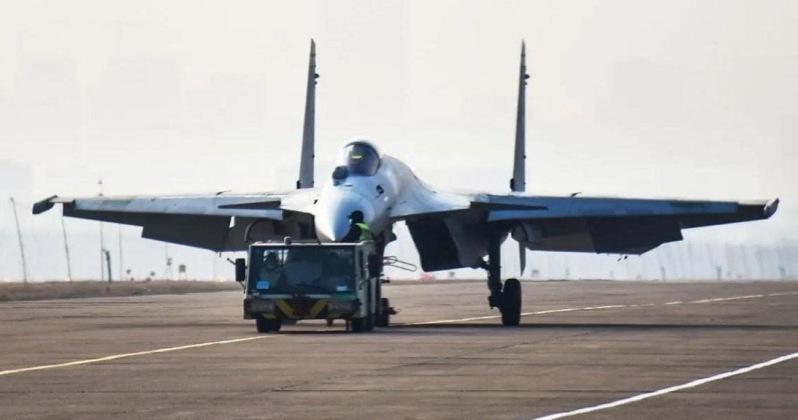The long anticipated launch of the first Chinese supercarrier, and the sixth carrier warship built in the country, has seen predictions for its date moved forwards after satellite imagery released on June 14 showed the warship’s dry dock at Jiangnan Shipyard in Shanghai flooded in preparation. Also clearly visible are flags hung over the ship’s island, down its side and around its deck, among other decorations, indicating a launch ceremony is imminent. Previously widely referred to as the Type 003, the warship now known as Type 002 will be by far the largest outside the United States and the only one other than the U.S. Navy warship USS Gerald Ford to have an electromagnetic catapult launch system. Other than the small but troubled French carrier Charles De Gaulle developed with American support, the United States and China are expected to remain the only countries fielding carriers with any kind of catapult launch systems allowing their aircraft to take off with significantly heavier weapons and fuel loads. Electromagnetic systems provide considerably more power than the older steam systems used on the U.S. Navy’s Nimitz Class ships and the French carrier De Gaulle, while taking up less space on the ships themselves.

China currently fields five carriers including three 35,000 ton Type 075 Class assault carriers, which deploy helicopters for a range of roles and are speculated to deploy specialised vertical landing capable fighters in future, as well as the warships Liaoning and Shandong which displace around 65,000 tons each and are based on the Soviet Kuznetsov Class design. The new Type 002 Class ship will deploy considerably more aircraft including a more advanced variant of the J-15 fighter currently used on the Liaoning and Shandong. Known as J-15B or J-15T, the fighters will deploy active electronically scanned array radars and be compatible with China’s latest air launched missile designs such as the PL-15 air to air missile. Their nose landing gear has been visibly strengthened, their shock absorbing oleo struts widened and lengthened, and launch bars attached to accommodate catapult launch and arrested recovery. The Type 002’s air wing is also expected to include J-15D electronic attack jets, KJ-600 airborne early warning and control aircraft, and a range of drones for reconnaissance and combat roles. A stealth fighter adapted for carrier use based on the FC-31 prototype is also expected to be fielded, and made its first appearance in October 2021. The new ship’s capabilities will place China and the United States in a league of their own in carrier aviation, although it is expected to be some years likely until after 2025 before it is fully operational. Whether more ships of the Type 002 Class will be built, or whether the Navy immediately will move on to order larger more capable carrier classes possibly with nuclear propulsion systems, remans uncertain.
